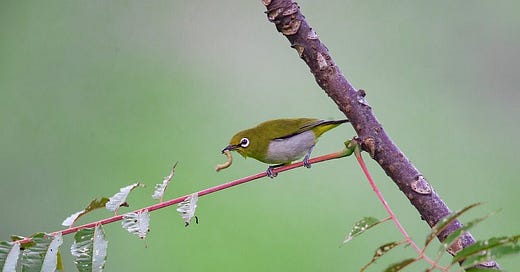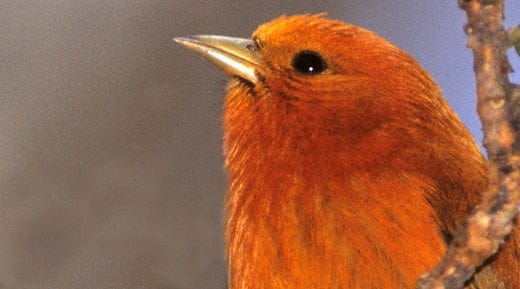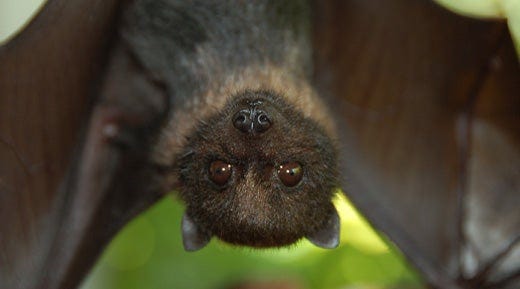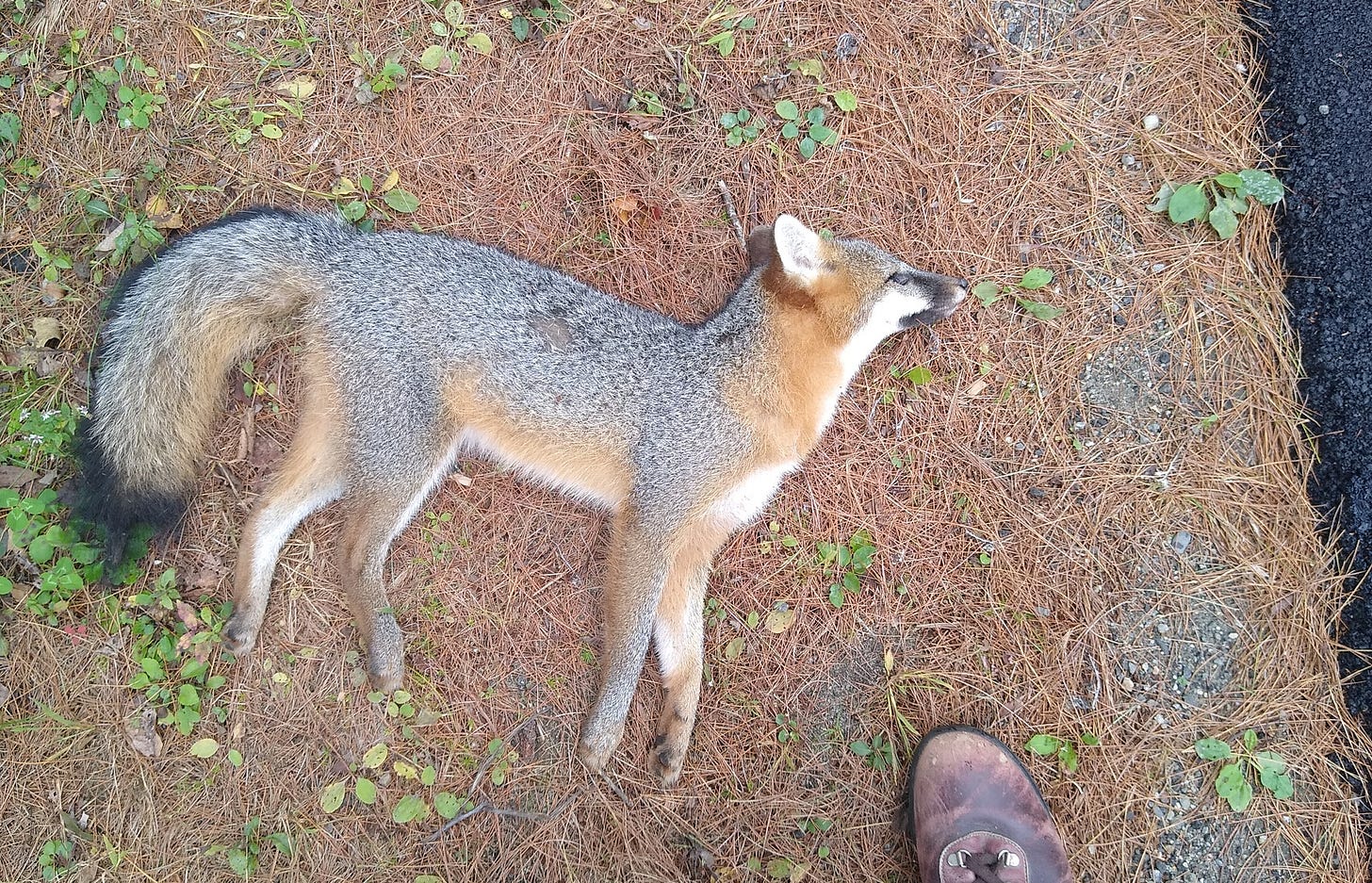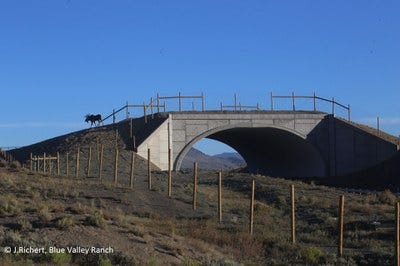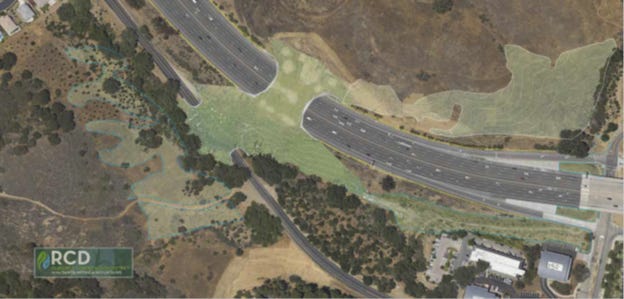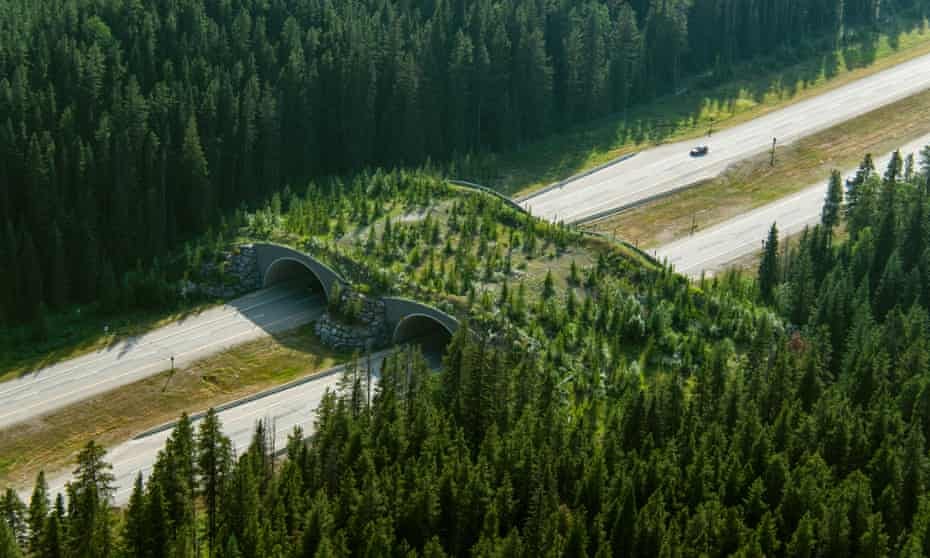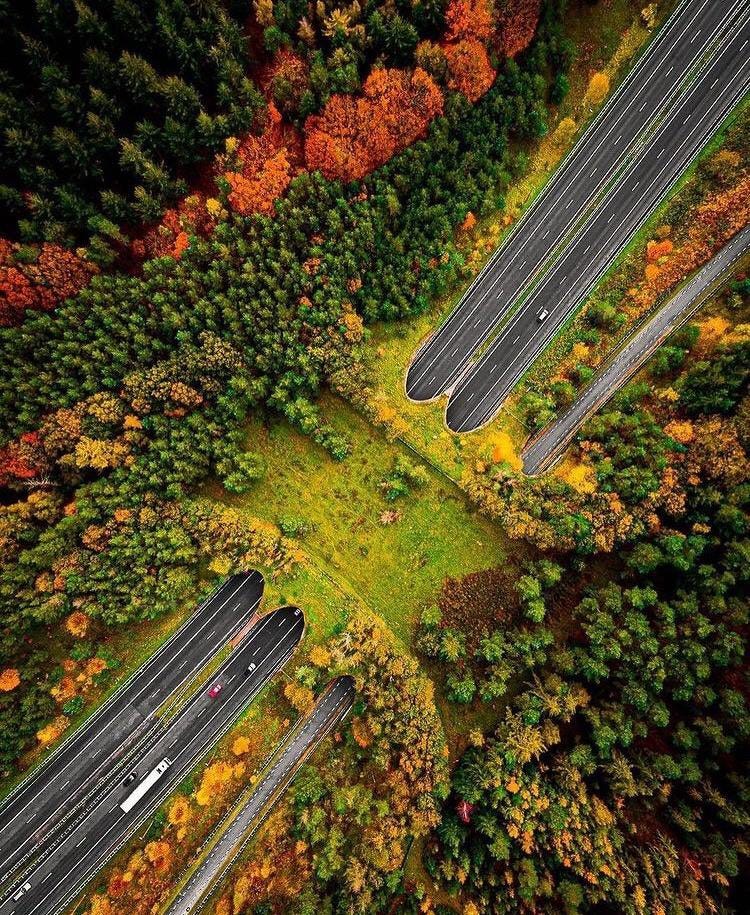Hello everyone:
This week in curated Anthropocene news, here are three recommendations:
1. Officially declared extinct by U.S. Fish and Wildlife: Ivory-billed woodpecker, Bachman’s warbler, Kauai akialoa, Kauai nukupuu, Kauai O’o, large Kauai thrush, Maui akepa, Maui nukupuʻu, Molokai creeper, poʻouli, bridled white-eye bird, the Little Mariana fruit bat, Phyllostegia glabra var. lanaiensis, the San Marcos gambusia fish, Scioto madtom fish, and eight mussel species from the southeastern U.S.: flat pigtoe, green-blossom pearly mussel, Southern acornshell, stirrupshell, tubercled-blossom pearly mussel, turgid-blossom pearly mussel, upland combshell, and the yellow-blossom pearly mussel.
2. Earth is dimming due to climate change. While this seems like aliens slandering our civilizational decisions, it actually means the Earth is now slightly less reflective due to diminished cloud cover. This would be an academic point if it didn’t also suggest that climate change may be accelerated by extra heat from the sun absorbed by the planet’s surface rather than reflected back into space.
3. We should be putting as much effort into figuring out methane removal from the atmosphere as CO2 removal.
Now on to this week’s writing, the second part of my essay on road ecology and wildlife crossings.
Why did the fox cross the road? To chase the chicken, sure, but also because there is no road.
There is only habitat.
What we’ve built, and what we do, does not often mean to other species what it means to us. Our world is weird and dangerous and full of hard surfaces. It does not often communicate in recognizable ways. Our cars, for example, do not scent mark their hunting routes to indicate that they will kill anything that crosses their path.
Since last week, when I began writing this ongoing essay on roadkill and crossings, I’ve seen the usual autumn assortment of dead squirrels, chipmunks, skunk, and porcupine. And then, in one day, Heather and I pulled over twice: once to help a turkey who, stunned from a collision that broke its left wing, had hunkered down a few inches from the pavement, and once to move a gorgeous gray fox body into the bushes.
Gray foxes are beautiful marvels. They climb trees, up to 50 feet or more, and they’re strong swimmers. They can run up to 28 miles per hour. Unlike other canids, they have retractable claws. They are the oldest of fox lineages, stretching back 10 million years.
Every 26 seconds or so, on average, a car hits a large animal.
That figure is based in the estimated 1 to 2 million collisions per year in the U.S. with large animals. It does not include the tens to hundreds of millions of small animals, like the gray fox and the turkey, killed in collisions that aren’t reported.
“At what point in our evolution as a society,” asks Ted Zoli, the bridge engineer and MacArthur Fellow I mentioned last week, “did it become okay to run over wildlife?”
The recent surge in the construction of wildlife crossings is rooted in road ecology – the Anthropocene science of the interaction between roads and the natural world – and in an understanding of our own transportation needs. As U.S. population increases and increasingly moves outward into suburban and exurban regions, it relies on aging infrastructure that also faces new challenges posed by a changing climate. There is much to do, because it makes moral and fiscal sense to address all of this at the same time. It is time, to borrow a phrase from the Biden administration, to build back better.
One example of this can be seen near Kremmling, CO, where a complex of overpasses, underpasses, animal off-ramps (to escape the highway if they manage to get onto it), and 10 miles of fencing were built. They have reduced wildlife collisions by 90%.
The People’s Way Project on the Flathead Indian Reservation in Montana built 41 crossings (nearly all underpasses) to benefit a multitude of species. Elsewhere in MT, the state highway and fish/wildlife departments have signed an agreement to incorporate wildlife concerns into transportation planning. In Idaho, the state transportation department also teamed up with fish and game staff as it rebuilt 17 bridges, improving habitat and passage for aquatic and terrestrial species. In Wyoming, a crossing complex for pronghorn antelope and mule deer lowered collisions by 80% and will pay for itself in less than 20 years. In Utah, the Parleys Summit Overpass on a stretch of highway known to locals as “slaughter row” was quickly adopted by wildlife, surprisingly so, given that it’s only 50 ft. wide and 320 ft. long. (Here’s a quick video montage of animals using it.) And in California, the Liberty Canyon crossing, one of the largest crossings in the world – 165 ft. wide, over ten lanes – will be built soon just 35 miles outside of Los Angeles, to link the Sierra Madre Range with the Santa Monica Mountains for the benefit of mountain lions, bobcats, coyotes, and many other species.
You can read summaries on these and many more in a pdf download from ARC (Animal Road Crossing), “Wildlife Crossing Success Stories in the Western States.” Here is a good short documentary (and a construction time-lapse) on another of those success stories, a decade-long effort in Nevada to create passage for mule deer migration. Likewise, up in Canada’s Banff National Park, a comprehensive array of 44 crossings over and under the TransCanada Highway have not only kept wildlife off the pavement and humans out of the hospital, but they’ve demonstrably improved the genetic diversity of the black and grizzly bear populations, not to mention providing habitat connectivity for moose, elk, wolves, foxes, and more that have become accustomed to the crossings.
I find it somewhat revelatory that predators and prey, ungulates and rodents, canids and big cats, will all willingly move out into the open terrain of a narrow bridge over the constant rush of traffic beneath them. But then again, before the bridge they were moving out into the much stranger terrain of the road itself.
It helps that the overpasses are often built with some natural landscaping to provide visual continuity with the terrain on either side. Where possible this is happening with underpasses as well. Underpasses meant for both wet and dry passage are now sometimes incorporating a “critter shelf” on the side so terrestrial species can keep their feet dry while fish or otters or frogs or alligators splash through the main channel. Here’s a nice sketch of some crossing options from Highway Crossing Structures for Wildlife: Opportunities for Improving Driver and Animal Safety, a guide produced by ARC and the Western Transportation Institute for the U.S. Forest Service:
What all of these projects have in common, other than placement in crucial locations and design for the needs of wildlife, is a fencing and crossing strategy. Each one has miles of serious fencing blocks access to the road and funnels wildlife toward the crossing, whether underpass or overpass. In one sense the strategy mirrors any transportation project – ensuring smooth and safe flow – and in another it mirrors the larger environmental goal of connecting habitats not merely on either side of the road but across entire landscapes.
This whole-landscape perspective underlies the mission of the Center for Large Landscape Conservation, which funds ARC. Decades of peer-reviewed reports by conservation biologists confirm that the single most important recommendation for protecting biodiversity, particularly in the face of a changing climate, is to ensure that wildlife habitats are connected on a landscape scale. The CLLC’s Corridors and Crossings program acknowledges first that “animals need to move,” and that in doing so “they shape and maintain the landscapes in which they live.” In other words, landscapes need wildlife as much as wildlife needs landscape. To help rebuild the capacity of wildlife to do what it has always done, the CLLC uses
science such as spatial models and maps to help planners identify how and where animals move across the landscape, and how people help or hinder that movement. We apply this knowledge to support on-the-ground action, from helping wildlife safely cross roads to identifying and protecting vital lands.
So far I’ve focused on work in the western states. Much of the attention-grabbing innovative work in the U.S. is being done there, largely because those states are trying to protect herds of large migratory species and charismatic predators like bear and mountain lion which require extensive territories. And these states still have large, relatively intact landscapes (national parks, national forests, monuments, and wilderness areas, for example) to be connected if the killing highways that separate them can be bridged. This is less true in the eastern U.S., but I’ll say more about that in a moment.
Elsewhere in the world wonderful projects are also taking place. Wild asses in Mongolia can now cross the Trans-Mongolian railway for the first time in seventy years. Sweden is building a dozen reindeer viaducts for the herds that the Sami move through the north of the country. Ireland is working on plans to reduce collisions with barn owls. The Netherlands, ahead of the curve, has hundreds of crossings, including dozens of large “ecoducts” (overpasses). Underpasses in Mexico’s Yucatan Peninsula provide safe passage for jaguars. Annual swarms of migratory red crabs on Australia’s Christmas Island are now funneled toward amazing little underpasses and overpasses. The Center for Large Landscape Conservation is working in Asia to promote wildlife-friendly linear infrastructure (roads and rails), and they are partnering with the International Union for the Conservation of Nature (IUCN) to produce guidelines for nations to preserve or create ecological connectivity. In Europe, similar concepts exist in Wildlife & Traffic: A European Handbook for Identifying Conflicts and Designing Solutions.
Clearly, we’ve entered a new age of wildlife crossings. It’s still a smattering of Band-Aids for millions of miles of road, but it amounts to a significant cultural shift that can be filed under Good-Things-Being-Done in response to the global biodiversity crisis. It’s early days yet, but governments are incorporating the needs of wildlife into the way they plan and construct transportation networks. That’s important systemic change.
But what about nonmigratory species, or wildlife with small territories, or animals that aren’t as charismatic or threatened or valued for hunting? What about all the millions of small animals we hit that don’t cause economic damage? What about entire landscapes composed of these species which live in small habitats alongside millions of miles of unfenced roads? These questions are especially relevant for those of use who live in the eastern U.S.
I’ll address these questions next week, in this ever-lengthening essay.
I’ll close out this week with another fox anecdote. There is a young red fox here in our neighborhood who has decided that hunting along the road in broad daylight is an fine idea, taking advantage of the easy walking alongside the rodent-filled edge habitat of our linear infrastructure. Twice in the last week or so I’ve watched it trot down the southbound lane by the house here and ignore oncoming vehicles until becoming surprised and a bit insulted as drivers stopped to try to scare it off, without success.
Finally, I ran out into the road myself, barefoot, and chased the fox off the road and into a field where, I swear, it turned to look at me with an expression that said What did I ever do to you?

